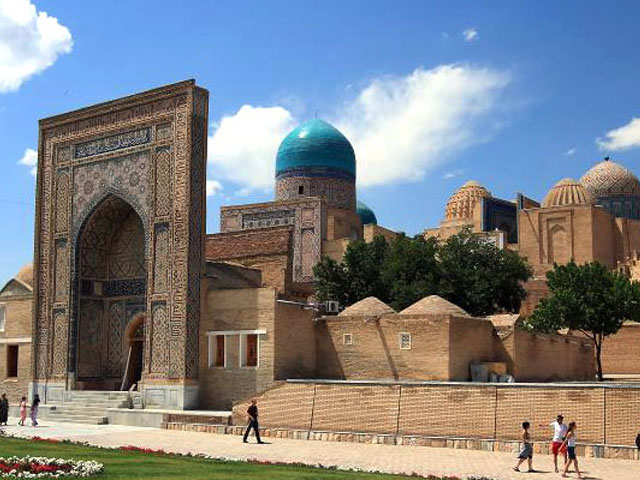The picturesque memorial complex Shah-i-Zindah is often considered nothing less than an architectural jewel.
The mausoleum above the grave of the prophet Kusam ibn Abbas served as the core of the Shah-i-Zindah necropolis.
The construction process lasted almost nine centuries; and the preserved part of the ensemble includes more than 20 buildings of that time. The complex comprises of three groups of structures -lower, middle and upper- which are connected by arched domed passages (chartak).
The earliest structures of the ensemble date back to the 11-12th centuries. Of that time only foundations, wall fragments and vaults of those buildings have been preserved. The main group of structures dates back to the 14—15th centuries.
The main part of the memorial -the Kusam ibn Abbas Complex (11 -15th centuries) - is situated in the northeastern part of the ensemble. All structures of this group - a mosque, mausoleum, chillyakhana (a room for the 40-day fast) and other passages- were built in different times.
The ceramic gravestone of Kusam ibn Abbas, which appeared in the 1380s in the time of Timur, is the main decoration of the mausoleum. The upper group of buildings consists of three mausoleums facing each other. The earliest one is the Khodja-Akhmad Mausoleum (the 40s of the 14th century), which finishes the passage from the north. The Mausoleum of 1361, on the right, confines the same passage from the east. On the western side there is another complex built by Timur’s wife Tuman-aka in the beginning of the 15th century. This complex consists of three rooms - a mausoleum, mosque and hujra.
The middle group consists of the mausoleums of the last quarter of the 14th century - first half of the 15th century and is connected with the names of Tamerlane's relatives, military and clergy aristocracy. On the western side the Mausoleum of Shadi Mulk-aka, Tamerlane’s niece, stands out.
The ornament of the whole interior, from the foundation to the domes, is very rich. Opposite is the Mausoleum of Shirin Bika-aka, Tamerlane's sister. Its portal is covered with deep blue composite carved mosaics.






















